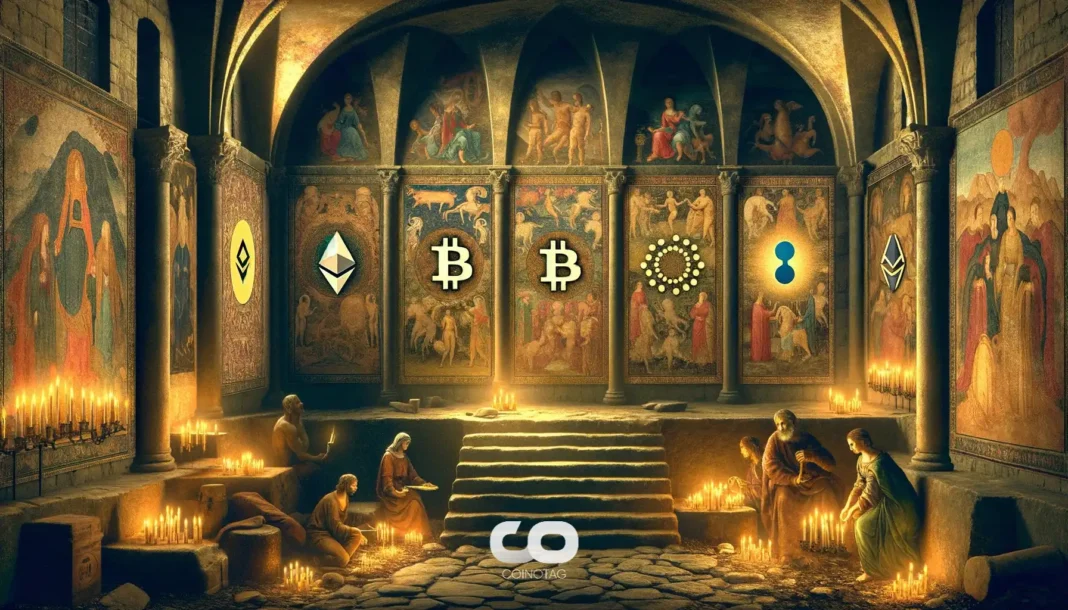| COINOTAG recommends • Exchange signup |
| 💹 Trade with pro tools |
| Fast execution, robust charts, clean risk controls. |
| 👉 Open account → |
| COINOTAG recommends • Exchange signup |
| 🚀 Smooth orders, clear control |
| Advanced order types and market depth in one view. |
| 👉 Create account → |
| COINOTAG recommends • Exchange signup |
| 📈 Clarity in volatile markets |
| Plan entries & exits, manage positions with discipline. |
| 👉 Sign up → |
| COINOTAG recommends • Exchange signup |
| ⚡ Speed, depth, reliability |
| Execute confidently when timing matters. |
| 👉 Open account → |
| COINOTAG recommends • Exchange signup |
| 🧭 A focused workflow for traders |
| Alerts, watchlists, and a repeatable process. |
| 👉 Get started → |
| COINOTAG recommends • Exchange signup |
| ✅ Data‑driven decisions |
| Focus on process—not noise. |
| 👉 Sign up → |
-
GMX’s V1 GLP pool suffered a significant $40 million exploit, exposing vulnerabilities in audited DeFi smart contracts and raising concerns about leverage trading security.
-
The attacker manipulated the GLP vault mechanism to mint excessive tokens without collateral, highlighting critical protocol-specific logic flaws missed by prior audits.
-
According to COINOTAG sources, the breach was isolated to V1, with GMX offering a 10% bounty for fund recovery, emphasizing the complex realities of DeFi incident response.
GMX’s $40 million V1 GLP pool hack reveals critical flaws in audited DeFi contracts and questions the future of decentralized leverage trading security.
Audit Limitations and the $40 Million GMX V1 GLP Pool Breach
The recent $40 million exploit targeting GMX’s V1 GLP pool underscores the inherent limitations of current DeFi audit practices. Despite comprehensive reviews by leading firms such as Quantstamp and ABDK Consulting, the attacker exploited a nuanced leverage manipulation vulnerability that eluded detection. This incident illustrates that while audits effectively identify common risks like reentrancy and access control issues, they often fail to capture complex, protocol-specific logic flaws.
In this case, the attacker artificially inflated GLP token minting without adequate collateral, subsequently redeeming these tokens for underlying assets and draining the pool rapidly. The breach’s sophistication was further enhanced by the use of Tornado Cash to obfuscate transaction origins and cross-chain transfers via Circle’s protocol, complicating traceability efforts.
Implications for DeFi Leverage Trading and Security Paradigms
GMX’s exploit raises critical questions about the sustainability and security of decentralized leverage trading platforms. As a dominant player in the perpetual trading space, GMX’s vulnerability signals potential systemic risks for similar protocols relying heavily on smart contract logic to manage leveraged positions. The incident challenges the prevailing confidence in audit-driven security models, suggesting a need for more dynamic and context-aware security assessments that extend beyond traditional vulnerability scanning.
| COINOTAG recommends • Professional traders group |
| 💎 Join a professional trading community |
| Work with senior traders, research‑backed setups, and risk‑first frameworks. |
| 👉 Join the group → |
| COINOTAG recommends • Professional traders group |
| 📊 Transparent performance, real process |
| Spot strategies with documented months of triple‑digit runs during strong trends; futures plans use defined R:R and sizing. |
| 👉 Get access → |
| COINOTAG recommends • Professional traders group |
| 🧭 Research → Plan → Execute |
| Daily levels, watchlists, and post‑trade reviews to build consistency. |
| 👉 Join now → |
| COINOTAG recommends • Professional traders group |
| 🛡️ Risk comes first |
| Sizing methods, invalidation rules, and R‑multiples baked into every plan. |
| 👉 Start today → |
| COINOTAG recommends • Professional traders group |
| 🧠 Learn the “why” behind each trade |
| Live breakdowns, playbooks, and framework‑first education. |
| 👉 Join the group → |
| COINOTAG recommends • Professional traders group |
| 🚀 Insider • APEX • INNER CIRCLE |
| Choose the depth you need—tools, coaching, and member rooms. |
| 👉 Explore tiers → |
Moreover, GMX’s response—freezing leverage functions and halting GLP minting and redemption—reflects the delicate balance between maintaining platform integrity and minimizing user disruption during crisis management. The public offer of a 10% bounty to the attacker for fund return further exemplifies the pragmatic, albeit controversial, approaches DeFi projects must adopt in the absence of centralized recourse mechanisms.
Broader Industry Impact and Future Outlook for DeFi Protocols
This exploit serves as a cautionary tale for the broader DeFi ecosystem, emphasizing the necessity for continuous innovation in security practices. Protocols must integrate multi-layered defense strategies, including enhanced on-chain monitoring, real-time anomaly detection, and adaptive governance frameworks capable of responding swiftly to emerging threats.
| COINOTAG recommends • Exchange signup |
| 📈 Clear interface, precise orders |
| Sharp entries & exits with actionable alerts. |
| 👉 Create free account → |
| COINOTAG recommends • Exchange signup |
| 🧠 Smarter tools. Better decisions. |
| Depth analytics and risk features in one view. |
| 👉 Sign up → |
| COINOTAG recommends • Exchange signup |
| 🎯 Take control of entries & exits |
| Set alerts, define stops, execute consistently. |
| 👉 Open account → |
| COINOTAG recommends • Exchange signup |
| 🛠️ From idea to execution |
| Turn setups into plans with practical order types. |
| 👉 Join now → |
| COINOTAG recommends • Exchange signup |
| 📋 Trade your plan |
| Watchlists and routing that support focus. |
| 👉 Get started → |
| COINOTAG recommends • Exchange signup |
| 📊 Precision without the noise |
| Data‑first workflows for active traders. |
| 👉 Sign up → |
Additionally, the incident highlights the importance of community engagement and transparency in incident response. GMX’s proactive communication and collaboration with security firms and the wider DeFi community set a precedent for managing crises effectively while preserving user trust.
Conclusion
The $40 million GMX V1 GLP pool hack exposes critical vulnerabilities in audited DeFi smart contracts and challenges the efficacy of current security paradigms. As decentralized leverage trading continues to evolve, protocols must prioritize advanced, context-specific security measures and foster transparent incident management to safeguard user assets and maintain ecosystem resilience.
| COINOTAG recommends • Traders club |
| ⚡ Futures with discipline |
| Defined R:R, pre‑set invalidation, execution checklists. |
| 👉 Join the club → |
| COINOTAG recommends • Traders club |
| 🎯 Spot strategies that compound |
| Momentum & accumulation frameworks managed with clear risk. |
| 👉 Get access → |
| COINOTAG recommends • Traders club |
| 🏛️ APEX tier for serious traders |
| Deep dives, analyst Q&A, and accountability sprints. |
| 👉 Explore APEX → |
| COINOTAG recommends • Traders club |
| 📈 Real‑time market structure |
| Key levels, liquidity zones, and actionable context. |
| 👉 Join now → |
| COINOTAG recommends • Traders club |
| 🔔 Smart alerts, not noise |
| Context‑rich notifications tied to plans and risk—never hype. |
| 👉 Get access → |
| COINOTAG recommends • Traders club |
| 🤝 Peer review & coaching |
| Hands‑on feedback that sharpens execution and risk control. |
| 👉 Join the club → |
| COINOTAG recommends • Members‑only research |
| 📌 Curated setups, clearly explained |
| Entry, invalidation, targets, and R:R defined before execution. |
| 👉 Get access → |
| COINOTAG recommends • Members‑only research |
| 🧠 Data‑led decision making |
| Technical + flow + context synthesized into actionable plans. |
| 👉 Join now → |
| COINOTAG recommends • Members‑only research |
| 🧱 Consistency over hype |
| Repeatable rules, realistic expectations, and a calmer mindset. |
| 👉 Get access → |
| COINOTAG recommends • Members‑only research |
| 🕒 Patience is an edge |
| Wait for confirmation and manage risk with checklists. |
| 👉 Join now → |
| COINOTAG recommends • Members‑only research |
| 💼 Professional mentorship |
| Guidance from seasoned traders and structured feedback loops. |
| 👉 Get access → |
| COINOTAG recommends • Members‑only research |
| 🧮 Track • Review • Improve |
| Documented PnL tracking and post‑mortems to accelerate learning. |
| 👉 Join now → |







